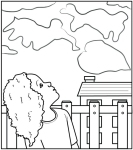By Brenda B. Covert

|
Poetry - Rhyme, Rhythm, and More
By Brenda B. Covert |

|
 |
Create Weekly Reading Books
Prepare for an entire week at once! |
| Leave your feedback on Poetry - Rhyme, Rhythm, and More (use this link if you found an error in the story) |
 |
Clouds
|
 |
Weather
|
 |
Poetry
|
 |
Science
|